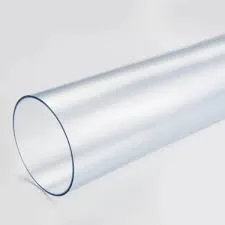Дек . 26, 2024 02:30 Back to list
PPR Pipes and Fittings for Efficient and Sustainable Plumbing Solutions
Understanding PPR Pipes and Fittings A Comprehensive Overview
In the realm of modern plumbing and piping systems, PPR (Polypropylene Random Copolymer) pipes and fittings have emerged as a superior choice for both domestic and industrial applications. Known for their versatility, durability, and overall efficiency, PPR pipes and fittings are rapidly replacing traditional materials such as metal and PVC in various installations. This article explores the characteristics, benefits, and applications of PPR pipes and fittings, shedding light on why they are becoming increasingly popular in the plumbing industry.
What are PPR Pipes and Fittings?
PPR pipes are made from a type of polypropylene that is characterized by its random molecular structure. This unique composition grants the material significant advantages, making it ideal for a wide range of plumbing applications. PPR fittings, which are designed to connect PPR pipes, include a variety of shapes such as elbows, tees, and couplings. Together, they create a comprehensive piping system that is highly effective in transporting water and other fluids.
Key Features of PPR Pipes
1. Durability PPR pipes are incredibly robust, exhibiting resistance to high temperatures, pressures, and various chemicals. They can handle temperatures up to 95°C (203°F), making them suitable for both hot and cold water systems. The long service life, often exceeding 50 years, ensures that they are a reliable investment.
2. Lightweight Compared to traditional metal pipes, PPR pipes are significantly lighter, making transportation and installation easier. This lightweight characteristic also reduces the overall structural load on buildings.
3. Corrosion Resistance Unlike metal pipes, PPR does not corrode, rust, or scale. This property ensures that the water transported through PPR pipes remains clean and safe for consumption, minimizing health risks associated with contaminated water.
4. Ease of Installation PPR pipes can be easily welded together using heat fusion methods, which create strong and leak-proof joints. This process not only makes installation straightforward but also eliminates the need for seals and fittings that can often be points of failure in other piping systems.
ppr pipes and fittings

5. Cost-Effectiveness Although the initial investment in PPR piping may be slightly higher than PVC alternatives, the long-term savings in maintenance and replacement costs make PPR a more economical choice over time.
Benefits of Using PPR Pipes and Fittings
1. Eco-Friendly PPR pipes are recyclable and produced without harmful additives, making them an environmentally friendly option compared to PVC and other plastic alternatives. Their longevity and low maintenance also contribute to reduced waste.
2. Thermal Insulation PPR has low thermal conductivity, which means it can maintain water temperature for extended periods. This property is particularly beneficial for hot water systems, as it reduces energy costs.
3. Low Flow Resistance The smooth internal surfaces of PPR pipes reduce friction, allowing for higher flow rates and less energy consumption. This efficiency is crucial in systems where consistent water pressure is necessary.
4. Versatile Applications PPR pipes and fittings can be used in a wide array of systems, including residential plumbing, heating systems, air conditioning, and even agricultural irrigation. Their adaptability makes them a go-to choice for many professionals in the field.
Conclusion
As the demand for reliable and efficient piping solutions continues to grow, PPR pipes and fittings stand out for their exceptional properties and benefits. Their durability, ease of installation, and cost-effectiveness make them an ideal choice for a variety of applications, positioning them as a modern standard in plumbing systems. Choosing PPR over traditional materials not only ensures long-term performance but also contributes to environmentally sustainable practices in construction and infrastructure development. As more industries begin to recognize the advantages of PPR, it is clear that this innovative material will play a pivotal role in the future of plumbing technology.
-
Durable PP Rigid Sheet: Lightweight, Chemical Resistant Solutions
NewsAug.21,2025
-
PVC Grey Sheet for Extraction: Chemical Resistant & Durable
NewsAug.19,2025
-
Durable PVC Pipe Fittings for Plumbing & Irrigation Needs
NewsAug.18,2025
-
HDPE Steel Belt Reinforced Spiral Corrugated Pipe | High Strength
NewsAug.17,2025
-
HDPE Pipe Fittings: Durable, Leak-Proof Solutions
NewsAug.16,2025
-
Premium CPVC Sheet: High-Temp & Chemical Resistant Solutions
NewsAug.15,2025

